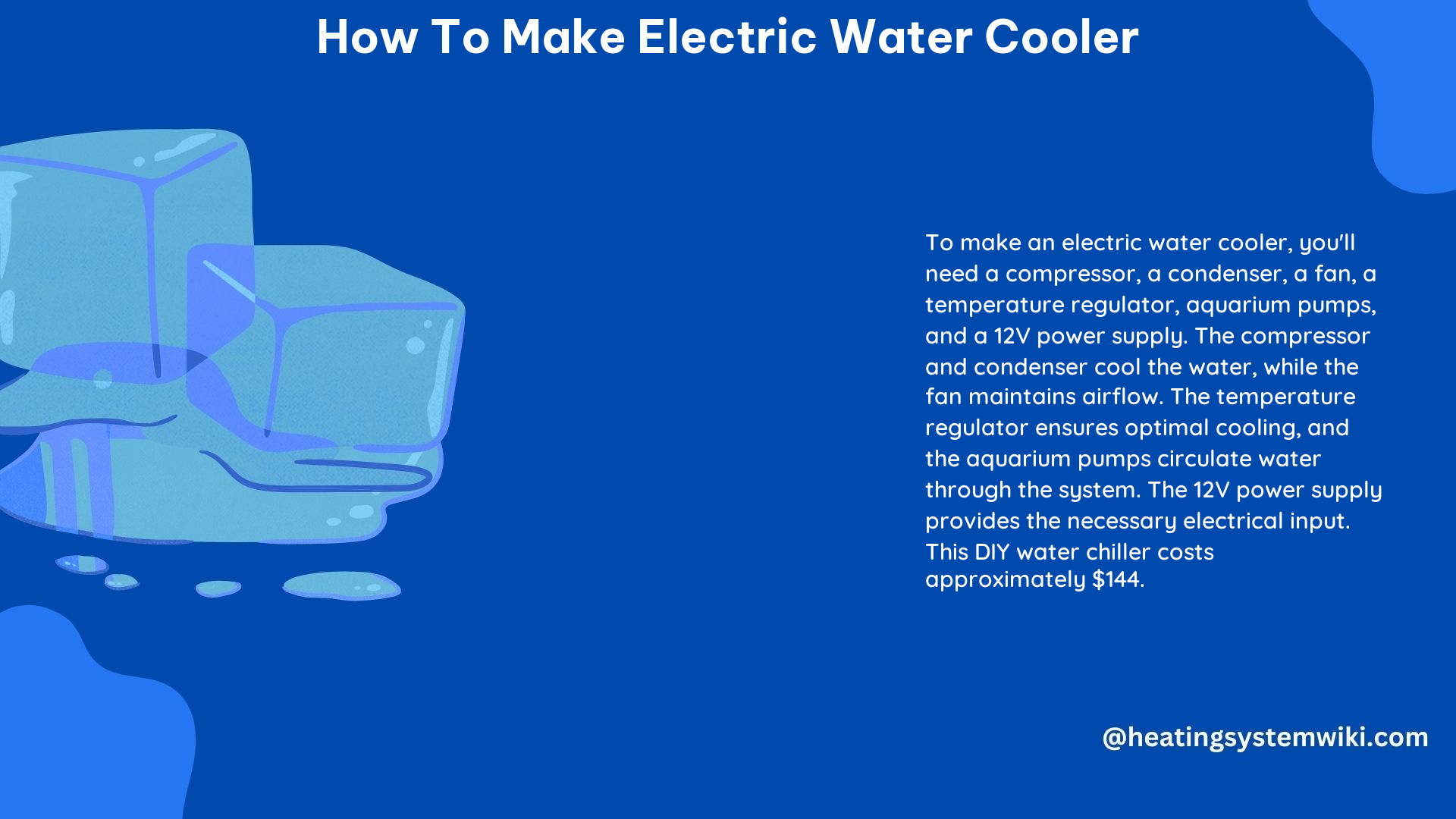Creating an electric water cooler at home can be a rewarding and cost-effective project. This comprehensive guide will walk you through the step-by-step process of building your own efficient and customizable water cooling system.
Materials Needed
To construct an electric water cooler, you will require the following components:
- Peltier Module: This is the heart of the system, responsible for the cooling effect. Look for a Peltier module with a maximum cooling capacity of at least 60 watts.
- Heat Sink with Fan: This component dissipates the heat generated on the hot side of the Peltier module. Choose a heat sink with a maximum heat dissipation capacity of 15 watts or more.
- Small Heat Sink: This heat sink is used to dissipate the heat on the cold side of the Peltier module.
- DC Water Pump: The water pump circulates the cooled water through the system. Opt for a DC water pump with a flow rate of at least 1 liter per minute and a maximum head pressure of 1 meter.
- 12V Power Supply: This power supply provides the necessary 12 volts to operate the Peltier module and the water pump.
- Acrylic Sheet: The acrylic sheet is used to create the water container.
- Thermal Compound: This compound helps improve the thermal transfer between the Peltier module and the heat sinks.
- Plastic Pipe: The plastic pipe is used to connect the water pump to the water container.
Step-by-Step Guide

-
Prepare the Peltier Module: Apply a generous amount of thermal compound to the cold side of the Peltier module and attach it to the small heat sink. This will help dissipate the heat generated on the cold side of the module.
-
Attach the Heat Sink with Fan: Secure the heat sink with fan to the hot side of the Peltier module. This will effectively dissipate the heat generated on the hot side, ensuring efficient cooling.
-
Construct the Water Container: Use the acrylic sheet to create a water-tight container. The size of the container will depend on your desired water capacity, but a typical size would be around 5 liters.
-
Connect the Water Pump: Attach the DC water pump to the water container using the plastic pipe. Ensure that the pipe is securely connected to both the pump and the container to prevent leaks.
-
Assemble the Cooling System: Place the Peltier module and the heat sinks inside the water container, making sure they are positioned to effectively cool the water. Secure the components in place using appropriate fasteners.
-
Connect the Power Supply: Connect the Peltier module and the water pump to the 12V power supply. Ensure that all connections are secure and properly insulated to prevent short circuits.
-
Insulate the System: To maximize the efficiency of the electric water cooler, it is essential to insulate the water container and the cooling components. Use foam or rubber insulation to minimize heat loss and maintain the desired cooling temperature.
-
Test and Adjust: Turn on the power supply and observe the cooling performance of the system. Adjust the positioning of the components or the water flow rate as needed to achieve the desired cooling effect.
Technical Specifications
The electric water cooler system described in this guide has the following technical specifications:
- Peltier Module: Maximum cooling capacity of 60 watts
- Heat Sink with Fan: Maximum heat dissipation capacity of 15 watts
- DC Water Pump: Flow rate of 1 liter per minute, maximum head pressure of 1 meter
- Power Supply: 12V, maximum output power of 12 watts
These specifications are based on the components mentioned earlier and can be adjusted depending on your specific requirements and the availability of parts.
Conclusion
Building an electric water cooler at home can be a rewarding and practical project. By following the detailed steps and utilizing the right components, you can create a customized and efficient cooling system that will provide you with chilled water for various purposes. Remember to prioritize safety, proper insulation, and efficient heat dissipation to ensure the optimal performance of your homemade electric water cooler.
Reference:
– How to Make a Mini Water Cooler at home – YouTube
– DIY Water Chiller : 17 Steps (with Pictures) – Instructables
– Water Cooling Dispenser Make Electric Water Cooler From Compressor Homemade Water Dispenser #Electric #WaterCooler #Compressor #Homemade #Water #Dispenser – YouTube
– How to make instant water cooler – YouTube
– How to Make a Portable Water Cooler at Home – YouTube
